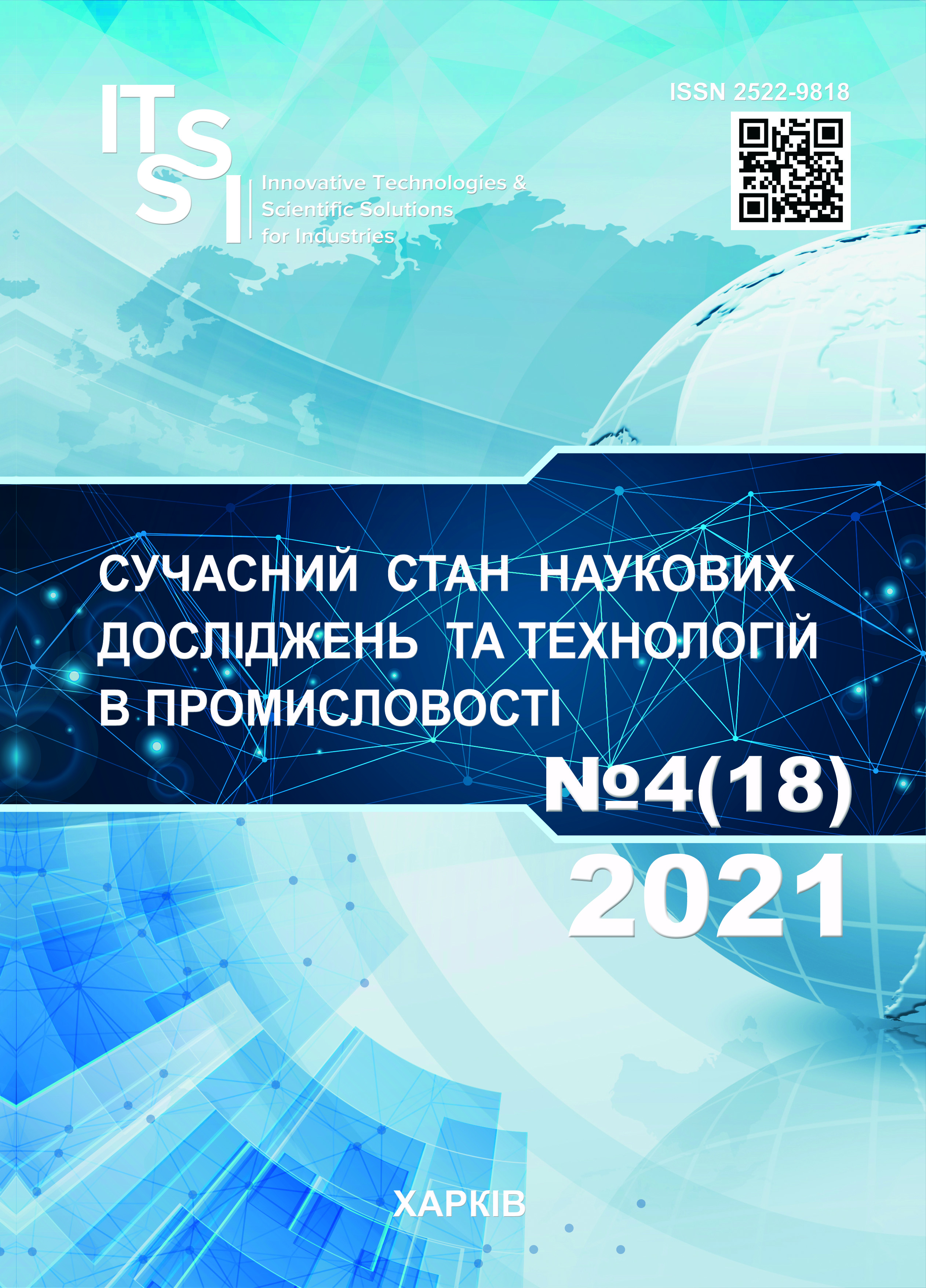METHOD OF IDENTIFICATION OF OBJECT STATES ACCORDING TO THE RESULTS OF FUZZY MEASUREMENTS OF CONTROLLED PARAMETERS
DOI:
https://doi.org/10.30837/ITSSI.2021.18.075Keywords:
method of identifying object states, information value of controlled parameters, fuzzy mechanism of logical outputAbstract
The subject of consideration is the task of identifying the states of an object based on the results of fuzzy measurements of a set of controlled parameters. The fuzziness of the initial data of the task further complicates it due to the resulting inequality of the controlled parameters. The aim of the study is to develop a method of identifying the states of a fuzzy object using a fuzzy mechanism of logical output taking into account possible differences in the level of information content of its controlled parameters. The method of obtaining the desired result is based on the modification of the known mathematical apparatus for building an expert system of artificial intelligence by solving two subtasks. The first is the development of a method for assessing the informativity of controlled parameters. The second is the development of a method for constructing a mechanism for logical inference of the relative state of an object based on the results of measuring controlled parameters, which provides identification. In the first problem, a method is proposed for estimating the informativity of parameters, free from the known disadvantages of the traditional Kulbak informativity measure. In implementing the method, it is assumed that the range of possible values for each parameter is divided into subbands in accordance with possible states of the object. For each of these states, the function of belonging to the fuzzy values of the corresponding parameter is defined. At the same time, the correct problem of estimating the informativity of a parameter is solved for cases when this parameter is measured accurately or determined fuzzily by its belonging function. The fundamental difference between the proposed logical output mechanism and the traditional one is the refusal to use the production rule base, which ensures the practical independence of the computational procedure from the dimension of the task. To solve the main problem of identifying states, a non-productive approach is proposed, the computational complexity of which practically does not depend on the dimension of the problem (the product of the number of possible states Results.per the number of controlled parameters). The logic output mechanism generates a probability distribution of the system states. In this case, a set of functions of belonging of each parameter to the range of its possible values for each of the states of the object is used, as well as a set of functions of belonging to fuzzy measurement results of each parameter. Conclusions. Thus, a method of identifying the state of fuzzy objects with a fuzzy non-productive output mechanism is proposed, the complexity of which does not depend on the dimension of the task.
References
Mamdani, E.H. (1977), "Application of fuzzy logic to approximate reasoning using linguistic systems", Fuzzy sets and Systems, V. 26, P. 1182 – 1191. DOI: 10.1109/TC.1977.1674779
Rutkovskaia, D., Pylynkovskyi, M., Rutkovskyi, L. (2004), Neural networks, genetic algorithms and fuzzy systems, M.: Horiachaia lynyia -Telekom, Р. 384.
Abrakham, A., Semchenko, P.N. (2013), "Expert systems based on rules", Vestnyk Tykhookeanskoho hosudarstvennoho unyversyteta, No. 3(30), Vol. 3 (30), Р. 29–40.
Chastykov, A.P., Havrylova, T.A., Belov, D.L. (2003), Development of expert systems, CLIPS environment. Series "Study Guide", SPb.: BKhV-Peterburh, Р.395.
Shtovba, S. D. (2001), Introduction to fuzzy set theory and fuzzy logic, Vynnytsa: UNYVERSUM, Vynnytsa, Р. 756.
Paklyn, N. A., "Fuzzy Logic - Mathematical Foundations", BaseGroup Labs, available at: https://basegroup.ru/print/228 (Last accessed at 05.06.2017)
Kruhlov, V.V., Dly, M.Y. (2002), Intelligent information systems: computer support for fuzzy logic and fuzzy inference systems, M.: Fyzmatlyt, Р. 274.
Babuska, R. (1998), Fuzzy Modeling for Control, Boston, USA: Kluwer Academic Publishers, Р. 260.
Borysov, V.V., Fedulov, A.S. (2005), Fuzzy production models and networks, Smolensk: Yzd., VA VPVO, Р. 284.
Kullback, S., Leibler, R. A. (1951), "On information and sufficiency", Ann Math. Statist, Vol. 22, No. 1, Р. 79 – 86. DOI: 10.1214/aoms/1177729694
Semenov, S., Sira, O., Gavrylenko, S., Kuchuk, N. (2019), "Identification of the state of an Object under of fuzzy input data", Eastern – European Journal of Enterprise Technologies, Vol. 1, Issue 4, Р. 22 – 30. DOI:10.15587/1729-4061.2019.157085
Raskyn, L.H., Seraia, O.V. (2013), "Analysis of fuzzy expert systems", SOY, Р. 31-34.
Raskyn, L.H. (1997), Analysis of Markov chains using phase coarsening of states, Nauka, tekhnyka, tekhnolohyia, obrazovanye, zdorove, Kh.- NTU, Р. 196.
Seraia, O.V. (2010), Multidimensional logistics models under uncertainty, Kh.: Stetsenko, Р. 512.
Raskyn, L.H., Seraia, O.V. (2003), "Formation of a scalar preference criterion based on the results of pairwise comparisons", Visnyk NTU KhPI.-Kh., No. 6, Р. 63–68.
Downloads
Published
How to Cite
Issue
Section
License
Copyright (c) 2021 Roman Korsun

This work is licensed under a Creative Commons Attribution-NonCommercial-ShareAlike 4.0 International License.
Our journal abides by the Creative Commons copyright rights and permissions for open access journals.
Authors who publish with this journal agree to the following terms:
Authors hold the copyright without restrictions and grant the journal right of first publication with the work simultaneously licensed under a Creative Commons Attribution-NonCommercial-ShareAlike 4.0 International License (CC BY-NC-SA 4.0) that allows others to share the work with an acknowledgment of the work's authorship and initial publication in this journal.
Authors are able to enter into separate, additional contractual arrangements for the non-commercial and non-exclusive distribution of the journal's published version of the work (e.g., post it to an institutional repository or publish it in a book), with an acknowledgment of its initial publication in this journal.
Authors are permitted and encouraged to post their published work online (e.g., in institutional repositories or on their website) as it can lead to productive exchanges, as well as earlier and greater citation of published work.














